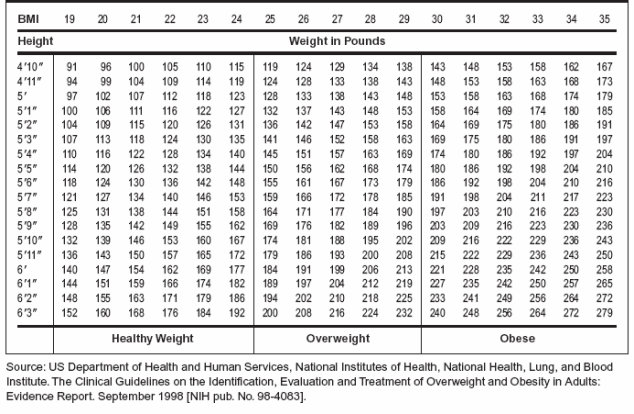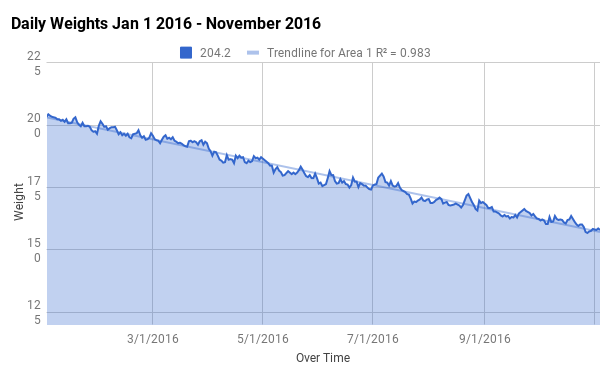The problem with weight loss is that it’s easy to get stuck in analysis paralysis. That’s when you just research stuff forever and don’t take any action. Sometimes the reason for this procrastination is fear (of success or failure), and sometimes it’s just information overload. If you are one of the overwhelmed, today’s post is for you. We’re going to break the intermittent fasting weight loss process down into three steps, so you can move past the overwhelm and get started today. Here are the steps:
- Step 1: Commit to a goal weight and strategy.
- Step 2: Write down a fasting plan you can live with.
- Step 3: Implement, track, and tweak.
Before we get to the first step, there’s an important prerequisite: you must decide that you’re ready to lose weight.
No amount of knowledge, encouragement, or motivational material will help you until you are ready to help yourself. Until you make up your mind that you’re ready to get the weight off, you’ll be stuck in analysis paralysis. I stayed there for quite some time. It’s not a fun place to be. The fun place to be is when you’re successfully losing weight, and then keeping it off. On to the first step.
Step 1: Commit to a goal weight and strategy.
Taking action is the only thing that takes the weight off. And action only starts to happen when you commit to a goal weight and strategy.
Goal Weight
You need a number to aim at. Here is another opportunity to get stuck. What number should you aim for? You can debate with yourself endlessly about this. I know I did. The truth is there are many perfectly good weights to be at. There’s no perfect number.
My best advice would be to take a look at the BMI chart below and pick a number near the top end of the normal BMI, or low end of the overweight for your height. Remember that you can always set a new goal, or make changes if you find it necessary. The idea is to get yourself moving in the right direction. Jot down that number.

Strategy
I read blog posts, read scientific articles, and researched weight loss plans until my head felt like it would explode. I constantly felt conflicted about the right path to take. Everyone seemed so certain that their way was The Way. The more I saw this the more I began to doubt that there was a single perfect path. I finally decided there were plenty of perfectly good paths. I just needed to choose one.
You’re here reading this blog, which means you want to try intermittent fasting. That’s your strategy. Commit to this. If you’re already doing some form of intermittent fasting, pick the window that you feel the best at. If you’ve never done any intermittent fasting before, try to work your way to a 16:8. That’s 16 hours of fasting with an 8-hour eating window. Working your way there gradually will make this process feel easy and therefore sustainable. Generally speaking, people find they start to lose weight with a 16:8. Mentally prepare yourself that you probably won’t lose any weight until you get there. The main thing is to commit to the strategy.
The commitment is important because hard times will come. Commitment to your goal and strategy will pull you through these times.
Step 2: Write down a plan that you can live with.
This is a major stumbling block for many people. Why is that? It appears to me that it’s because writing something down takes commitment. It takes effort. It’s easy enough to think in your head about losing weight. But to write it down puts it in black and white. It’s kinda scary.
The wonderful thing about a written plan is that you can see in black and white what you’re committing to. It’s the document you can look to in order to hold yourself accountable, to see if you’re truly performing the actions you said you’d take. It will be the document you can show yourself when that perfectionist side of you tries to start browbeating you into making things harder than necessary.
Writing down your plan keeps you on track. In the first place, it can show you right off the bat if your plan is too hard or too complicated. It will help you start to think through things. You’ll likely see some obstacles as you write things down, and you can take that opportunity to amend your plan before you even implement it. You’ll be working smarter, not harder, and you’ll save yourself some heartache.
Your written plan is your chance to articulate to yourself what you are willing to do in order to get to your goal. It can give you the opportunity to dream a little, to give yourself some freedom.
Here’s what my written plan looked like in 2016:
- Intermittent fasting 6 days a week
- Eat whatever I want at all my meals
- Coffee with half and half whenever I want it throughout the day
- Walk 6 miles a day
- Cheat day on Sunday
After I wrote down this plan, I thought it would be too easy. I thought I’d gain 10 pounds or more. But I decided to try it for 6 weeks, and see how it went. I even made a deal with myself that if I gained 10 pounds, I could call it quits before the 6 weeks was up. As it turned out, the plan worked and I lost about a pound a week.
The important thing is that you begin implementing your plan today, after you write it down. Not tomorrow. Not next week. Not after the holidays. Today. It doesn’t matter if you ate breakfast three hours ago. If you decided you’re going to have your eating window from 2 pm – 8 pm, Monday-Saturday, then wait until 2 to eat again. If you decided to take Sundays off and it’s Sunday, take the day off. If you’re brand new to intermittent fasting and you decided to start by cutting your eating off at 10 pm at night and it’s 9:30 pm right now, go ahead and finish that burrito in your hand, but stop eating by 10. Whatever it is, start the plan right now.
Your plan won’t be perfect and neither will you, which brings us to the last step.
Step 3: Implement, track, and tweak
Implementation
Having a goal and a written plan will not take a single pound off your body. Implementing the plan day in and day out is what will do that. Implementation won’t be perfect, and that’s okay. You’re going to run into situations that are awkward. You’ll go off plan. Sometimes you’ll overeat. You’ll forget you were supposed to be fasting and you’ll accidentally eat something. Learn from it, move forward, and most importantly, keep implementing.
Tracking
Keeping track of what your weight is doing will show you whether or not your plan is working. What works for me is weighing myself daily, keeping track of my seven-day average, and watching my seven-day average over about 6 weeks’ worth of time. The scale will move like a heartbeat day to day. Ignore that. Focus on what your weight is doing over 6 weeks’ worth of time. Here’s what my daily weights looked like in 2016, when I successfully went from 205 to 158:

If the scale isn’t moving in the direction you want it to, or if your plan is just not jiving with your life, it’s time for a tweak.
Tweaking
Intermittent fasting isn’t magic. It just helps you eat the right amount of calories so that you’ll lose weight. This means that even if you do an 18:6 perfectly, you will still gain weight if you’re eating too much in your eating window. So what should you do if that’s your scenario?
A possible tweak would be to lengthen your fasting window out to a 20:4 and see if that facilitates your eating the right amount. Or you might prefer to make a no-snacking rule. Or a snacking only on Wednesdays rule. There are an infinite number of things you can try. The important thing is that you attempt to make a tweak that will help you get to your goal AND be one that you can live with permanently.
As long as you refuse to quit, and you keep implementing, tracking, and tweaking, you’ll get to your goal weight. Once you’re there, it’s the same process. You figure out your maintenance goal range. You write down a plan. You continue to implement, track, and tweak as necessary.

I thought about ending this post with, “Good luck!” But luck has nothing to do with weight loss. It all comes down to consistent action over time. So instead, I’ll end by saying this. If I can do it, you can do it. The important thing is, just do it.
Related Articles:

Thank you! I love IF!! GOD bless!!! Lost 9 pounds in 2 months…
Congratulations! Thanks for sharing.
Thank you! I love following you on YouTube. You make IF as simple as possible and doable. God Bless you. Becky
Thanks for watching on YouTube! Glad you enjoy the content. (: